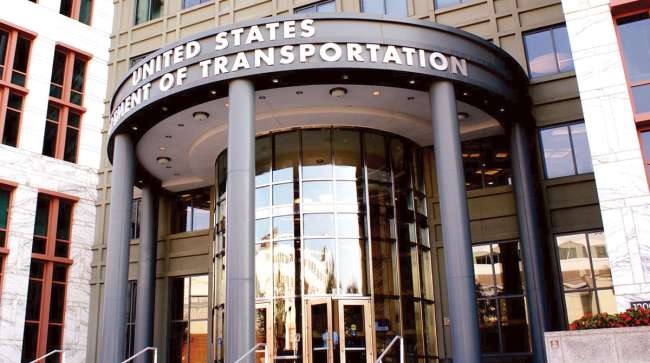Senior Reporter
FMCSA Researchers Outline Safety Studies, Data Collection

[Stay on top of transportation news: Get TTNews in your inbox.]
Plans for significant rulemaking proposals, in-depth studies, future technology research, and crash data collections this year and beyond were the leading topics of discussion at the Federal Motor Carrier Safety Administration’s annual Analysis, Research and Technology Forum.
Top agency officials held two three-hour public sessions April 24-25, outlining plans this year to issue a final joint rule to require and/or standardize equipment performance for heavy-truck automatic emergency braking systems, a proposed rule on transparency in property carrier broker transactions, a final rule to increase flexibility for CDL requirements and proposed amendments to the safe integration of automated driving systems.
FMCSA’s “areas of concern” expressed by researchers continued to include the rising numbers of truck-involved fatal crashes, increases in the number of truck fatal pedestrian accidents, large numbers of work zone fatal accidents, truck occupant fatalities, positive driver drug tests causing an exodus from the industry and a lack of widespread seat belt use.
One of the agency’s missions included statistical research that showed industry numbers have reached about 7.2 million regulated drivers, 14.2 million large trucks, 814,000 regulated carriers and data showing 90% of all current motor carriers have less than five trucks. The 2022 research data also showed that heavy trucks traveled 350 billion miles, and that although commercial motor vehicles comprise only 5% of all vehicles on U.S. highways, they account for 13% of vehicle fatal accidents.
The agency’s research annual budget is about $20 million, not including a $30 million funding outlay to conduct an in-depth crash causation study over the next several years, said Robert Kreeb, director of FMCSA’s Office of Analysis, Research and Technology.
“We see a lot of promise with advanced driver assistance systems,” Kreeb said. “When we use that term, we really mean technologies like advanced emergency braking, pedestrian warning systems, blind spot warning systems, lane departure and lane keeping assist. Those are areas of low-hanging fruit that’s worth continuing to invest in and promote the deployment of.”
Kreeb said that while automated driving systems are making headlines, there is a continuing need to ensure they’re operating safely.
We also see priority research in the areas of human factors, impairment and driver qualifications.
Robert Kreeb, director of FMCSA’s Office of Analysis, Research and Technology
Image
“So we’re doing research around what are best practices for operating ADS vehicles,” he said, “and also research in understanding how we can evaluate the safety performance of those vehicles.”
Kreeb added, “We also see priority research in the areas of human factors, impairment and driver qualifications. Year in and year out, driver-related factors are always one of the leading causal factors for crashes. So research around fatigue and distraction is ongoing, and we’re doing some exciting work in those areas in novel technologies with real-time monitoring. We’re going to continue on that path.”
Other areas of research include trailer safety, data mining and analysis, roadside enforcement tools, cybersecurity, truck parking technologies, and research on brakes, tires, lighting and mirrors, Kreeb said.

Meyer
One of the major research projects by FMCSA over the next several years will be a crash-causal study that will identify the key factors that contribute to heavy-duty CMV crashes and the countermeasures to prevent them, said Dan Meyer, an FMCSA senior transportation specialist.
The last in-depth major effort the agency took to collect data on causal factors of crashes was in 2003. The new study will take two years collecting more data elements, offer a larger sample size, be more focused in scope and involve more streamlined data collection, Meyer said.
“Starting next year, we will complete the training of the state CMV analysts, crash investigation and inspection personnel to ensure accurate and complete data collection,” Meyer said. “Data collection is planned to begin in the first quarter of 2026, with the final report issued after the conclusion of the data collection.”

Fox
At this year’s forum, Mike Fox, a senior highway accident investigator with the National Transportation Safety Board, was a special presenter.
Fox said the repeat human causal factors noted in the agency’s past investigations included fatigue, distraction and impairment, carrier operations problems centered on an inadequate safety culture, the improper use of driver monitoring systems and a lack of carrier fatigue-management systems.
Kelly Stowe, a general engineer specializing in new entrant training and testing, said that in 2012 Congress directed the Department of Transportation to establish a written proficiency exam and require applicant motor carriers to pass the exam.
“While the agency has done some research on this topic in the past, and we’ve collected comments a couple of times on the best ways to implement the requirement, we’ve never gotten much further than that,” Stowe said. “We are 10 years late in meeting this requirement.
“Our safety data is telling us that there is a problem with this population of carriers that needs to be addressed. New entrants are accounting for more fatal crashes involving large trucks and buses each year.”
Want more news? Listen to today's daily briefing below or go here for more info:





